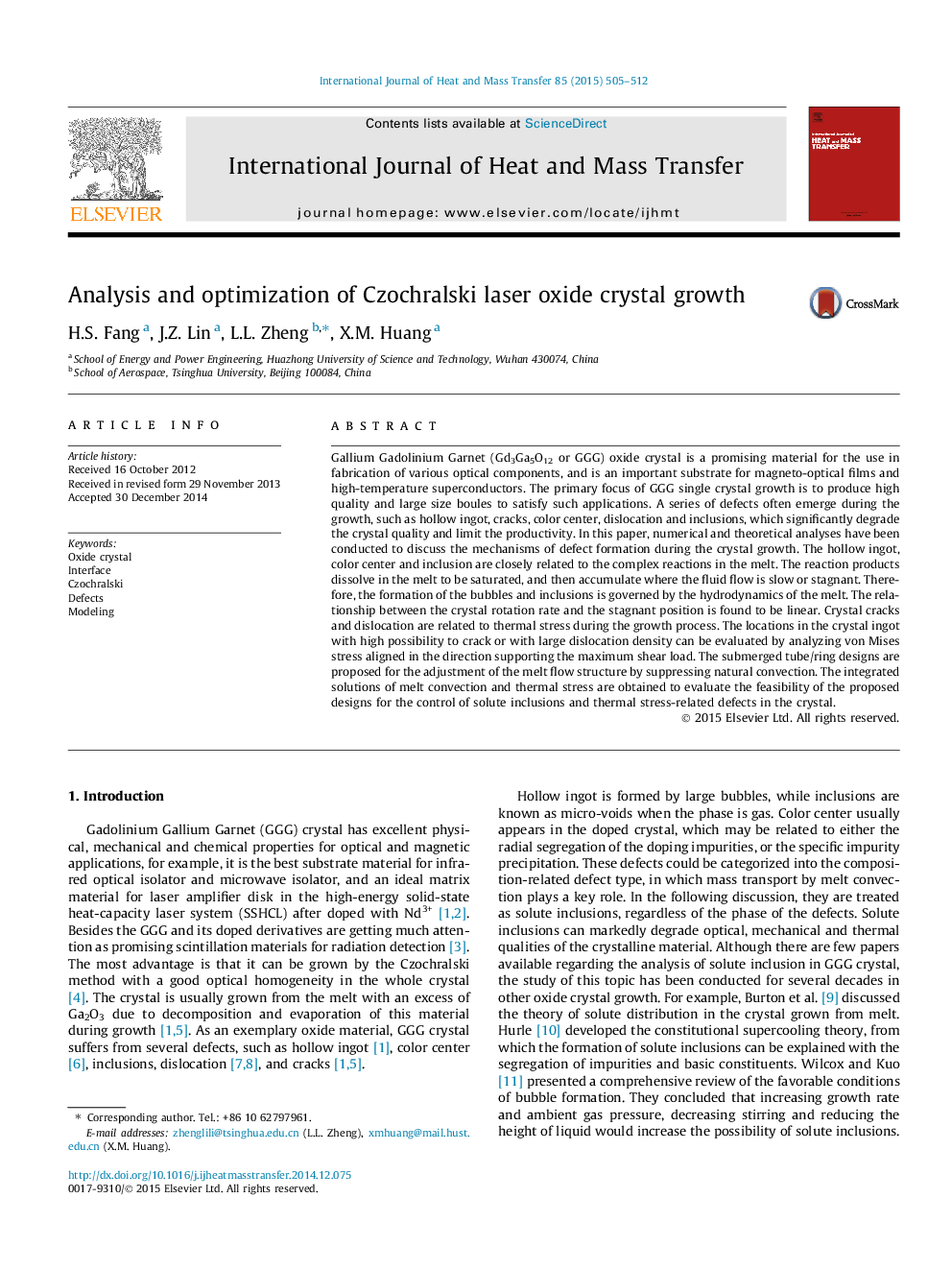| Article ID | Journal | Published Year | Pages | File Type |
|---|---|---|---|---|
| 7056686 | International Journal of Heat and Mass Transfer | 2015 | 8 Pages |
Abstract
Gallium Gadolinium Garnet (Gd3Ga5O12 or GGG) oxide crystal is a promising material for the use in fabrication of various optical components, and is an important substrate for magneto-optical films and high-temperature superconductors. The primary focus of GGG single crystal growth is to produce high quality and large size boules to satisfy such applications. A series of defects often emerge during the growth, such as hollow ingot, cracks, color center, dislocation and inclusions, which significantly degrade the crystal quality and limit the productivity. In this paper, numerical and theoretical analyses have been conducted to discuss the mechanisms of defect formation during the crystal growth. The hollow ingot, color center and inclusion are closely related to the complex reactions in the melt. The reaction products dissolve in the melt to be saturated, and then accumulate where the fluid flow is slow or stagnant. Therefore, the formation of the bubbles and inclusions is governed by the hydrodynamics of the melt. The relationship between the crystal rotation rate and the stagnant position is found to be linear. Crystal cracks and dislocation are related to thermal stress during the growth process. The locations in the crystal ingot with high possibility to crack or with large dislocation density can be evaluated by analyzing von Mises stress aligned in the direction supporting the maximum shear load. The submerged tube/ring designs are proposed for the adjustment of the melt flow structure by suppressing natural convection. The integrated solutions of melt convection and thermal stress are obtained to evaluate the feasibility of the proposed designs for the control of solute inclusions and thermal stress-related defects in the crystal.
Keywords
Related Topics
Physical Sciences and Engineering
Chemical Engineering
Fluid Flow and Transfer Processes
Authors
H.S. Fang, J.Z. Lin, L.L. Zheng, X.M. Huang,
